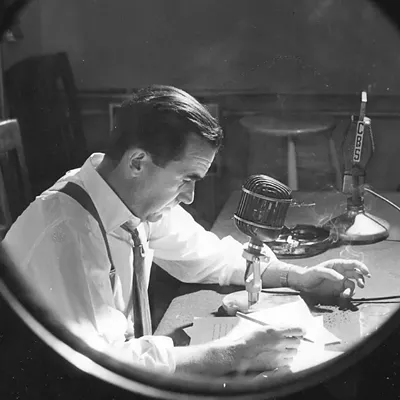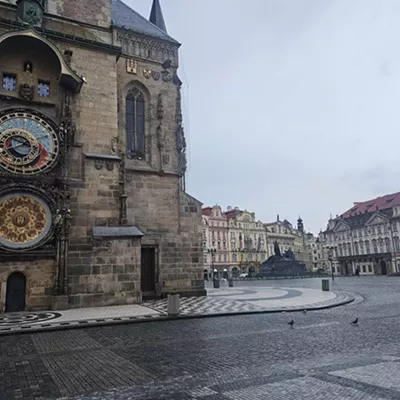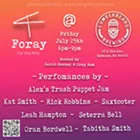It all started in court. That's where the work began for Rodney Frey's newest
book, Landscape Traveled by Coyote and Crane: The World of the Schitsu'umsh
(University of Washington Press), a collaborative and scholarly look at the bonds between the Coeur d'Alene Tribe -- which calls itself the Schitsu'umsh -- and the landscape of their traditional homeland. Certainly other writers, from Erle Stanley Gardner to John Grisham, have drawn inspiration from courtroom scenes. But Frey is a cultural anthropologist and a professor at the University of Idaho, so his book was destined to be more than the latest legal potboiler.
Frey has worked with the Coeur d'Alenes for more than a decade, gathering the oral literature of the tribe for an earlier book and helping to develop a native language arts curriculum for fourth-graders. In the mid-1990s, the Coeur d'Alene Tribe called on Frey to help with some reporting requirements in an environmental legal action. "They hired me in 1996 to work on the Natural Resources Damage Assessment for mining pollution on the Coeur d'Alene River," Frey remembers.
In order for the courts to assess the damages done to the tribe by mining activities, the report had to establish a baseline before mining began and then evaluate the cost of the environmental damage since then. This meant defining the tribe's relationship with the land and everything in it, both before contact with European Americans and after, and doing so in terms acceptable to the tribe and understandable by the courts. Frey framed the basic questions that would need to be answered. "How do the Coeur d'Alenes see their landscape? How, in the past, have they interacted with it? How, today, do they continue to interact? Is there continuity or discontinuity? We were there to make the case for continuity."
Frey had worked closely with tribal elders on his earlier book, Stories That Make the World, and from the elders he learned that the oral literature was the place to begin. "From the stories come the themes, the teachings, the miyp -- a Coeur d'Alene word for 'teachings about everything,' " he says. "There's an intimate relationship with the land."
The book is not organized like a typical scholarly ethnography, Frey says, although he didn't begin with a conscious effort at unconventionality. "The organization of the book came out of the process," he says. "We used the metaphor of storytelling all the way through, including the audience in the construction." The aim is to have the book unfold much like a traditional story, but to tell that story in a way that bridges the cultural gap between the Coeur d'Alenes and the book's non-Indian readers.
The first chapter opens with the story of Crane and Coyote, a story that not only provides models for behavior and values to be emulated, but also integrates those models and values into the story. From the beginning, Frey emphasizes the importance of the stories to Coeur d'Alene culture. Stories aren't just entertainment or nice lessons in morality; for the Coeur d'Alenes, the stories define and help bring forth the world.
In the early chapters of the book, Frey uses the traditional stories, along with contemporary interviews, to illustrate the history of the Schitsu'umsh people from "time immemorial" through the present day. The second half then reveals how the gifts from the land -- camas, huckleberries, water potatoes, deer, fish -- are to be received by the people and shared with those in need. Frey says this ethic of sharing runs strongly through the teachings and extends to sharing the wisdom and knowledge of the teachings themselves.
"This is something that's really well-developed with the Coeur d'Alenes," he says. "The [tribal] chairman [Ernie Stensgar] talked about it in his foreword to the book. The Coeur d'Alene idea is that you give to people who need help. And if you receive a gift, don't reciprocate, but instead pass it on. Help someone else who needs help."
Frey thoughtfully provides an appendix at the end of the book that explains some of the many considerations that went into such a collaborative research project. While meant primarily for other scholars, the appendix gives valuable insight into the hazards and joys of cross-cultural research and writing. The tribal council and elders reviewed the manuscript prior to publication and approved it for public dissemination. "I really appreciated the review process with the council," Frey says. "It's their story, so it has to be grounded in their lives."
Given the historical baggage inherent in relationships between white anthropologists and Native Americans, did Frey feel the weight of history pressing down on him as he attempted to tell the story of a culture that is not his own? He says his primary goal was to make sure the end result accurately represented the Schitsu'umsh experience.
"The weight I feel as a suuyapi -- a white person -- is, did I get it right? Other scholars and a wider audience will see the book, but my biggest, most important audience is the Coeur d'Alene people."














